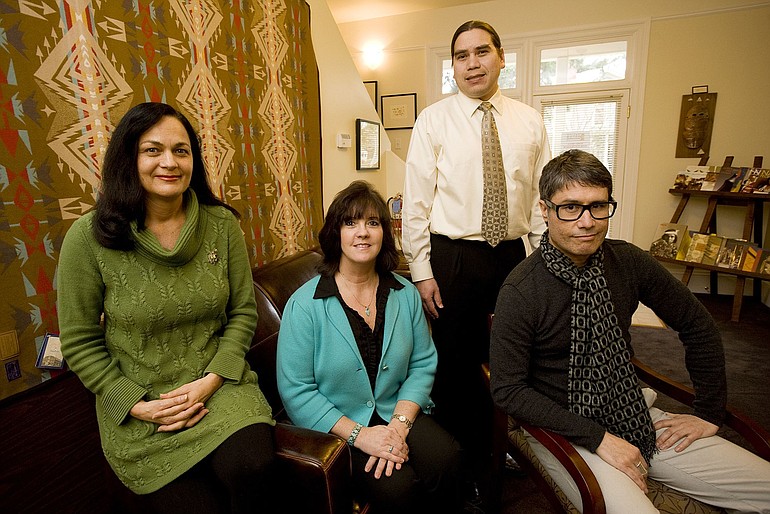More than a decade of meetings among Native Americans across the country have manifested in an elegantly appointed office near Fort Vancouver. There, a staff of four people work at creating a sort of National Endowment for the Arts for native artists.
The Native Arts & Cultures Foundation, created with a $10 million grant from the Ford Foundation, awarded its first grants last year — $394,319 to 26 Native American, Alaska Native and Native Hawaiian artists and organizations in 12 states.
“There’s so much opportunity in the area of native arts and culture. There’s so much credible art,” said Lulani Arquette, the foundation’s president and chief executive. “The talent, it’s there. There’s just not support for it.”
That’s what the Native Arts & Cultures Foundation aims to change. For now, the foundation is just getting its footing. It incorporated in late 2007. The foundation hired Arquette in 2009, and she moved from Hawaii, where she had led arts organizations.
Launching during an economic downturn has been tricky, but the foundation hopes to double its endowment in the next few years and expand its staff, Arquette said. The foundation received a $225,000 grant from the Vancouver-based M.J. Murdock Charitable Trust to hire a development director and establish a fundraising program.
Initially, the foundation intended to locate in Portland, but it instead opted for space on Officers Row, where rents were lower and the parking free, Arquette said. She added that it seemed fitting to work near Fort Vancouver, the historic home not only of the British Hudson’s Bay Company, but also the site of villages inhabited by Native Americans and Hawaiians.
“There’s rich history in this area,” Arquette said.
The foundation, perhaps because of its national scope, hasn’t attracted much attention locally. It has awarded one grant to a Vancouver organization, $20,000 to the Ke Kukui Foundation, which supports the preservation of Hawaiian/Polynesian culture through community events throughout Washington and Oregon.
Raising its profile — both locally and nationally — is on the foundation’s extensive to-do list.
“We’re doing a lot more outreach,” Arquette said.
The foundation also has expanded its board from five to 11 members. Marshall McKay, of the Yocha Dehe Wintun Nation, serves as chairman and Walter Echo-Hawk of the Pawnee Nation is vice chairman.
“A foundation of this nature will help reverse the long history of government suppression of native culture done as part of the United States’ assimilation program. Through gifts of this nature, Indian Country can direct its resources to protect what is closest to home to all Indian tribes — our own cultures,” Echo-Hawk said on the foundation’s website.
News of the foundation’s efforts is likely to spread as more artists and organizations receive grants. The foundation recently began accepting letters of inquiry, due at the end of April, for 2011 grants.
“We support multiple expressions of native art — from traditional to contemporary,” Arquette said. That encompasses hula dance, totem carving, basket weaving, storytelling, performance art, painting, poetry and other disciplines.
Seattle artist John Feodorov said he’s glad to see support of native art beyond “the feathers and beads thing.” He received $7,370 in 2010 for a solo exhibition at the Museum of Contemporary Native Arts in Santa Fe, N.M.
“The grant was incredible because it allowed me to update my computer system so I could also work on video and digitally oriented work. It also allowed for travel to the show. Otherwise, I doubt I would have been able to do it,” said Feodorov, a Navajo. “It’s an incredible resource. I think a lot of contemporary Native American work is still perhaps having trouble being recognized in some art circles.” He and others hope the Native Arts & Cultures will change that.



